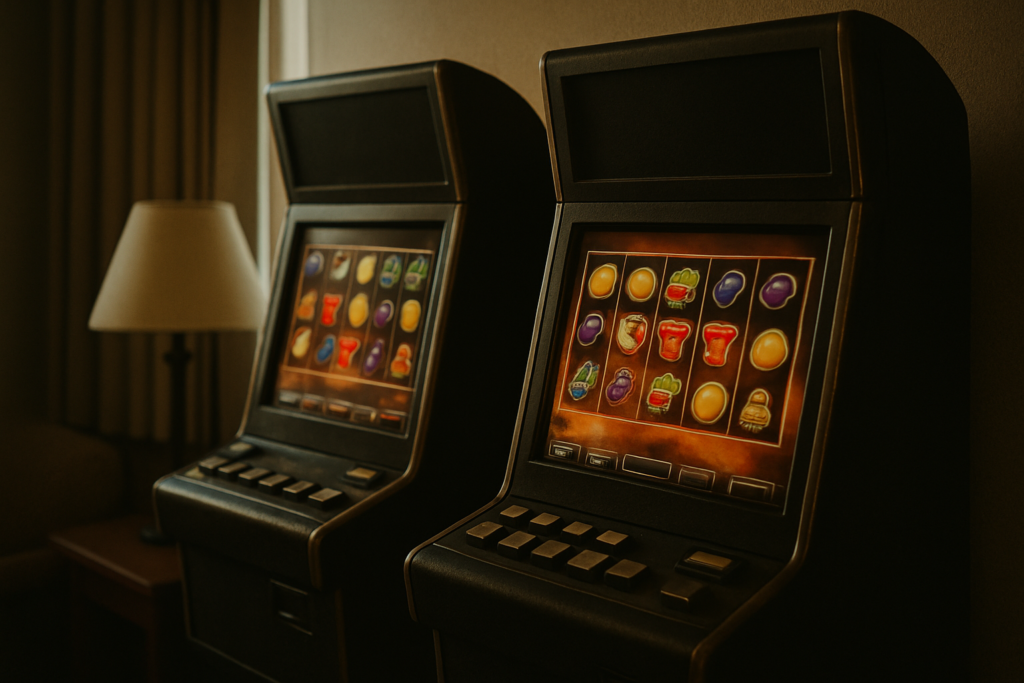Understanding Battle Royale Game Mechanics
Core Gameplay Features
Battle Royale games center on survival and strategic combat. Players begin each match parachuting onto a vast map. The start location is crucial as it impacts early-game strategies and safety.
- Safe Zones: Maps shrink over time, indicated by safe zones. Staying in these areas is essential to avoid damage from the enclosing storm or toxic gas.
- Loot Distribution: Scavenging for weapons and supplies is critical. High-tier loot appears in specific areas, creating hotspots for intense conflicts.
- Player Count: Typically, matches involve 100 players. The large number of participants ensures dynamic encounters and unpredictability.
- Revival Systems: Some games, like “Apex Legends,” offer respawn mechanics. This feature changes the stakes by allowing teammates to bring back fallen allies.
How Player Progression Works
Progression in Battle Royale games revolves around various reward systems and skill development.
Players improve through a combination of practice and in-game achievements like:
- Experience Points (XP): Completing matches, achieving kills, and reaching high placements grant XP. Accumulating XP levels up the player, unlocking rewards such as cosmetics or in-game currency.
- Seasonal Passes: Many games use seasonal passes, offering exclusive rewards. Players complete challenges to earn tiers, incentivizing continued engagement.
- Skill Development: Mechanics like recoil control and map knowledge are honed over time. Players see notable improvements in their performance through consistent play and adaptation to game changes.
Popular Battle Royale Games Analyzed
Fortnite: Building and Survival Strategies
Fortnite blends traditional shooting mechanics with unique building elements. Players collect materials like wood, brick, and metal to construct defensive structures or climb heights quickly.
Utilizing these resources strategically can give players a significant edge in combat.
Mastering the quick build techniques allows for instant cover during firefights and helps in navigating tough terrains efficiently.
Key survival strategies include landing in less crowded spots to gather materials and weapons before engaging opponents and continually moving to avoid being cornered by the storm.
PUBG: Realism and Tactics
PUBG emphasizes high realism with its slower-paced tactical gameplay.
Players deal with realistic ballistics, bullet drop, and weapon recoil. Mastering these elements is essential for accurate and effective shooting.
The game’s maps, like Erangel and Miramar, offer varied terrain—cityscapes, open fields, and dense foliage—each requiring different approaches for effective traversal and engagement.
Employing real-world combat strategies, such as using suppressive fire to cover a teammate’s advance, hiding in grass, or taking high ground, can significantly impact survival chances.
Apex Legends: Team Dynamics and Abilities
Apex Legends focuses on team-based gameplay with its unique character abilities.
Each character (or Legend) possesses distinct skills, like healing, deploying traps, or teleporting, adding layers of strategy.
Communication among team members is crucial, aided by the game’s ping system, which allows for non-verbal coordination.
Understanding and utilizing each Legend’s abilities to complement the team—such as pairing defensive skills with offensive tactics or using mobility tools to outmaneuver opponents—enhances overall team performance and survival.
Key Elements That Define Success in Battle Royale Games
 Importance of Map Design
Importance of Map Design
Map design significantly influences a Battle Royale game’s success. A well-designed map offers varied terrain, ensuring dynamic encounters and strategic play.
For example, open fields, dense forests, and urban settings provide different challenges, requiring players to adapt their strategies constantly.
Effective map design also balances loot distribution, making early game survival and late-game engagements equally exciting.
- “Fortnite’s” constantly evolving map keeps gameplay fresh by introducing new areas and altering existing ones, preventing monotony.
- “PUBG” offers diverse maps like Erangel and Miramar, each requiring different tactical approaches due to their distinct environments. Such considerations in map design enhance player engagement and replayability.
Balancing and Updates
Balancing and regular updates are crucial for maintaining a Battle Royale game’s longevity. Developers must ensure no single weapon, character, or strategy dominates, which would result in stale gameplay.
Frequent updates addressing community feedback can fine-tune the game’s balance.
- “Apex Legends” often adjusts character abilities and weapons based on player data and response, keeping the meta dynamic.
- “Fortnite” periodically introduces new weapons, items, and game modes, maintaining a balanced and vibrant gaming environment.
Continuous balancing and updates cater to both casual and competitive players, ensuring that the game’s ecosystem remains healthy and engaging.
The Future of Battle Royale Games
Innovations and Trends
The future of Battle Royale games looks promising with several innovations and trends on the horizon. One major trend is the integration of cross-platform play.
Examples like “Fortnite” and “Call of Duty: Warzone” enable players on different consoles and PCs to compete seamlessly, expanding player bases and fostering diverse gaming communities.
Another innovation is the incorporation of advanced AI.
AI-driven bots fill multiplayer lobbies to maintain fast matchmaking times, enhancing the user experience.
Virtual reality (VR) is another potential game-changer. Emerging VR Battle Royale titles aim to deliver immersive experiences.
For instance, “Population: One” already allows players to fly, climb, and build in VR, offering a fresh take on traditional mechanics.
In-game events and live storytelling also shape the genre’s future. Titles like “Fortnite” have hosted live concerts and narrative-driven events, creating dynamic interactions beyond standard gameplay.
Player Community and Esports
Community engagement and esports development play crucial roles in the future of Battle Royale games. Strong player communities drive a game’s longevity.
Developers increasingly leverage social media and streaming platforms to interact with players, gather feedback, and build loyal fanbases.
For example, “Apex Legends” effectively uses Twitter and Reddit to communicate updates and gather insights directly from its player community.
Esports elevates Battle Royale games to new heights.
Competitive scenes offer cash prizes, attract sponsorships, and create professional opportunities for players.
Titles like “PUBG” and “Fortnite” have established themselves as esports staples, hosting large-scale tournaments with millions of viewers.
These competitions generate excitement and publicity, promoting the genre’s growth and sustainability.
By focusing on innovations, trends, and community engagement, the future of Battle Royale games guarantees a compelling and dynamic evolution in the gaming world.


 Alice McClurg - Content Director Alice McClurg leads the editorial team as Content Director at Jackpot Journey Spot. With a keen eye for emerging trends and a deep understanding of the gambling landscape, Alice curates in-depth articles, event highlights, and game overviews. Her expertise helps guide readers through the ever-evolving world of gambling, ensuring they stay informed and entertained.
Alice McClurg - Content Director Alice McClurg leads the editorial team as Content Director at Jackpot Journey Spot. With a keen eye for emerging trends and a deep understanding of the gambling landscape, Alice curates in-depth articles, event highlights, and game overviews. Her expertise helps guide readers through the ever-evolving world of gambling, ensuring they stay informed and entertained.
